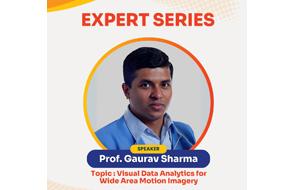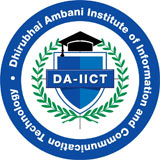Dhirubhai Ambani Institute of Information and Communication Technology, Gandhinagar
- PG Admissions 2023 Announced
- | Ph.D. Admissions 2023 Announced
- | Admission Helpline - Voice call: 080 66 91 91 80
- M.Tech. (EC) - last date 28th April 2022
- Admission Helpline - Voice call: 080 66 91 91 80
- UG Admissions - All India Category - Admission Status Announced
Events
Expert Talk: Visual Data Analytics for Wide Area Motion Imagery
Venue: LT-1
Date: 03/02/2025
Time: 02:00 PM
Biography:
Gaurav Sharma is a professor in the Departments of Electrical and Computer Engineering, Computer Science, and Biostatistics and Computational Biology, and a Distinguished Researcher in Center of Excellence in Data Science (CoE) at the Goergen Institute for Data Science at the University of Rochester. He received the PhD degree in Electrical and Computer engineering from North Carolina State University, Raleigh in 1996. From 1993 through 2003, he was with the Xerox Innovation group in Webster, NY, most recently in the position of Principal Scientist and Project Leader. His research interests include data analytics, cyber physical systems, signal and image processing, computer vision, and media security; areas in which he has 55 patents and has authored over 225 journal and conference publications. He served as the Editor-in-Chief for the IEEE Transactions on Image Processing from 2018 through 2020, and for the Journal of Electronic Imaging from 2011 through 2015. He is a member of the IEEE Publications, Products, and Services Board (PSPB), the IEEE Signal Processing Society Board of Governors, and chaired the IEEE Conference Publications Committee in 2017-18. He is the editor of the Digital Color Imaging Handbook published by CRC press in 2003. Dr. Sharma is a fellow of the IEEE, a fellow of SPIE, a fellow of the Society for Imaging Science and Technology (IS&T) and has been elected to Sigma Xi, Phi Kappa Phi, and Pi Mu Epsilon. In recognition of his research contributions, he received an IEEE Region I technical innovation award in 2008 and the IS&T Bowman award in 2021. Dr. Sharma served as a 2020-2021 Distinguished Lecturer for the IEEE Signal Processing Society.
Abstract:
The widespread availability of high resolution aerial imagery covering wide geographical areas is spurring a revolution in large scale visual data analytics. Specifically, modern aerial wide area motion imagery (WAMI) platforms capture large high resolution at rates of 1-3 frames per second. The sequences of images, which individually span several square miles of ground area, represent rich spatio-termporal datasets that are key enablers for new applications. The effectiveness of such analytics can be enhanced by combining WAMI with alternative sources of rich geo-spatial information such as road maps or prior georegistered images. We present results from our recent research in this area covering three topics. First, we describe a novel method for pixel accurate, real-time registration of vector roadmaps to WAMI imagery based on moving vehicles in the scene. Next, we present a framework for tracking WAMI vehicles across multiple frames by using the registered roadmap and a new probabilistic framework that allows us to better estimate associations across multiple frames in a computationally tractable algorithm. Finally, in the third part, we highlight, how we can combine structure from motion and our proposed registration approach to obtain 3D georegistration for use in application such as change detection. We present results on multiple WAMI datasets, including nighttime infrared WAMI imagery, highlighting the effectiveness of the proposed methods through both visual and numerical comparisons.



